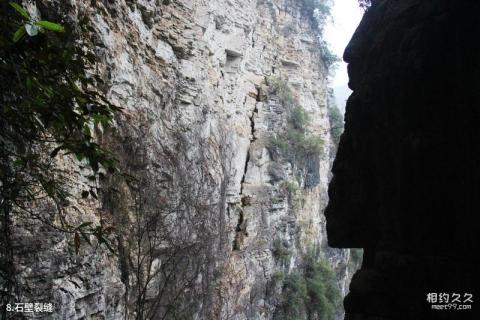
Introduction to the crack in the stone wall: A large crack splits the stone wall into two, which is very spectacular. During the Devonian period 380 million years ago, the crust of Wulingyuan and its surrounding areas fell and seawater infiltrated into it, turning it into a vast ocean. The flowing water continuously washed away a large amount of loose fine materials from the adjacent land, and together with the silicates in the seawater, they precipitated, cemented, and compacted to form the quartz sandstone rock layer. By the Permian period 285 million years ago, argillaceous limestone coal-bearing seams formed on top of the sandstone layer, covering the sandstone layer. At the end of the Triassic period 200 million years ago, strong crustal movement - orogeny - occurred in this area again, which caused the entire stratum to fold and fracture, forming mountains that continued to rise and expose the surface. After hundreds of millions of years of water erosion, cutting and joint development, the current natural scenery of thousands of towering peaks and thousands of rocks has been formed. According to scientific testing, the cracks on the stone wall are still slowly increasing. It would take 10,000 years for the cracks to completely split the stone wall into two and form two completely independent stone peaks.
